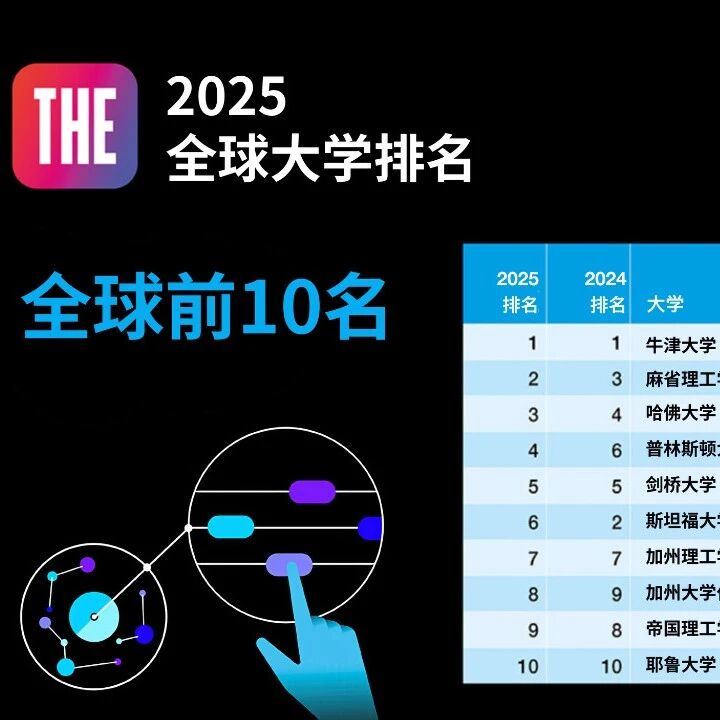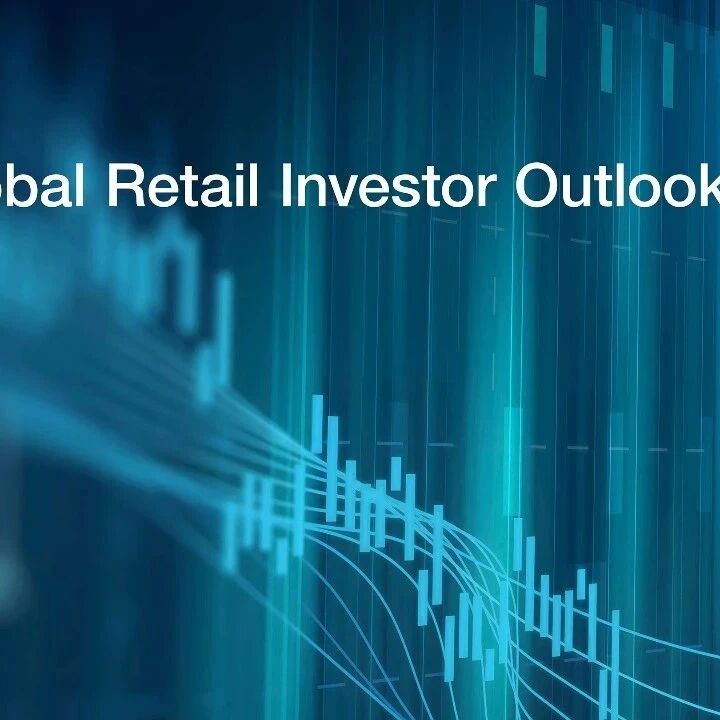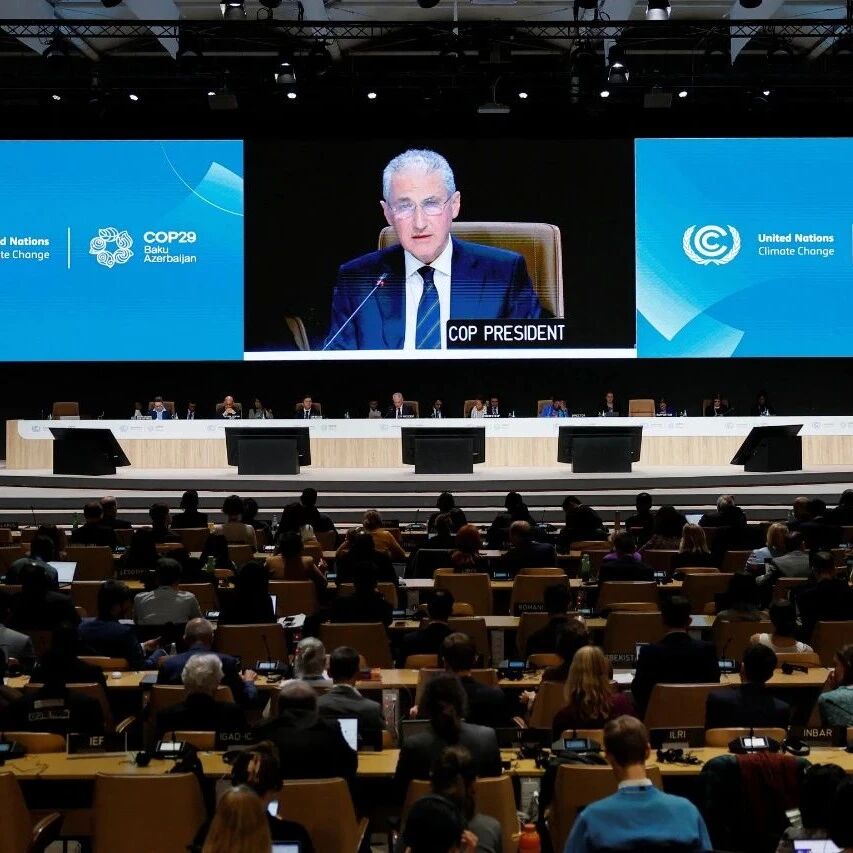
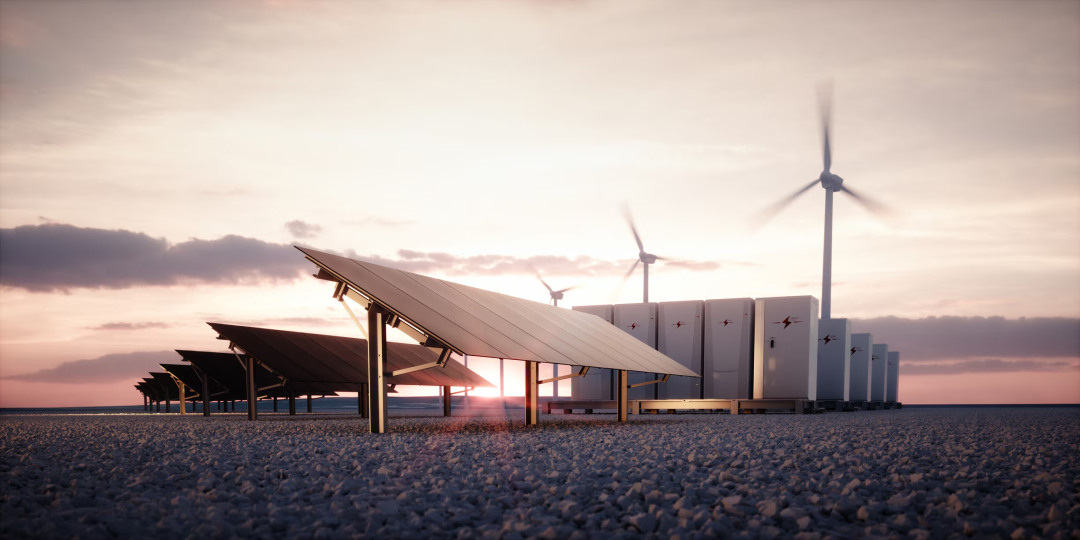
Green electricity direct supply offers a reliable pathway for export-oriented enterprises to meet carbon border adjustment rules.
Image source: Getty Images/iStockphoto
Jia Yufang
Researcher at the State Grid's Climate Strategy Project at the World Economic Forum
William Jernigan
Head of China Climate Strategy at the World Economic Forum
Green electricity direct procurement, by leveraging traceable, real-time clean energy, provides export-oriented businesses with a reliable pathway to meet carbon border adjustment regulations.
As companies increase their investments in green industry clusters, smart grids, and digital certification tools, the competitive edge is shifting—from cost reduction to a verifiable decarbonization process.
To scale up direct green energy connections and reduce compliance costs, we need to establish unified standards and streamline the financing and certification processes. Throughout this effort, global collaboration will be essential.
As cross-border carbon tariffs rise, companies that can directly utilize green energy through green power direct supply will gain a competitive edge in terms of both cost efficiency and regulatory compliance.
The expansion of carbon pricing systems and the emergence of carbon border adjustment policies have reshaped the business landscape, with decarbonization now taking on a more prominent strategic role.
Today, replacing supply chain energy with green energy in a transparently measurable way is the key to outpacing competitors and gaining a strategic edge in your growth strategy.
The Carbon Border Adjustment Mechanism strengthens requirements for supply-chain traceability by imposing carbon pricing on imported goods, necessitating the tracking and verification of product origins, manufacturing processes, and the types of energy used. These new compliance demands place a significant operational burden, as conventional methods typically fall short of meeting the stringent requirements.
To ensure compliance, companies must thoroughly overhaul their existing data collection and verification processes to demonstrate the precise correlation between the timing and location of green energy generation and production activities.
Therefore, high-energy-consuming industries such as metals and chemicals will face significantly higher costs as they reconfigure their energy infrastructure to comply with relevant regulations.
Addressing Traceability Bottlenecks
The European Union's Carbon Border Adjustment Mechanism (CBAM) is one of the global carbon border adjustment policies currently in place that features relatively clear and specific compliance requirements for "traceable green electricity."
However, many other countries are currently developing their own carbon border adjustment policy frameworks, and it’s highly likely that the traceability of green electricity will soon become a key consideration.
As more countries implement carbon border adjustment policies, the importance of green power direct supply for global export businesses is steadily growing. Green power direct supply utilizes dedicated power lines to deliver renewable energy directly from its source to consumers, enabling a more precise alignment between energy production and actual demand.
Unlike traditional methods that rely on virtual accounting and lack real-time spatial traceability, direct connection creates a traceable energy pathway—from the source all the way to the user.
Since energy can be physically traced from its source to the end user, green electricity direct supply—especially off-grid models—meets the EU’s Carbon Border Adjustment Mechanism requirements for “electricity supplied from non-public grids.” This helps export-oriented companies accurately track their carbon emissions and meet their growing demand for green energy.
Globally, regulatory frameworks for green electricity direct supply are rapidly evolving. Several EU countries—such as Germany, Denmark, Latvia, and the Netherlands—have taken the lead in introducing policies related to green electricity direct supply, implementing differentiated approaches across various industries.
In May 2025, China unveiled a landmark, groundbreaking policy—the "Notice on Matters Relating to the Orderly Promotion of Direct Green Electricity Trading," which defines and encourages various market players to invest in direct green electricity projects.
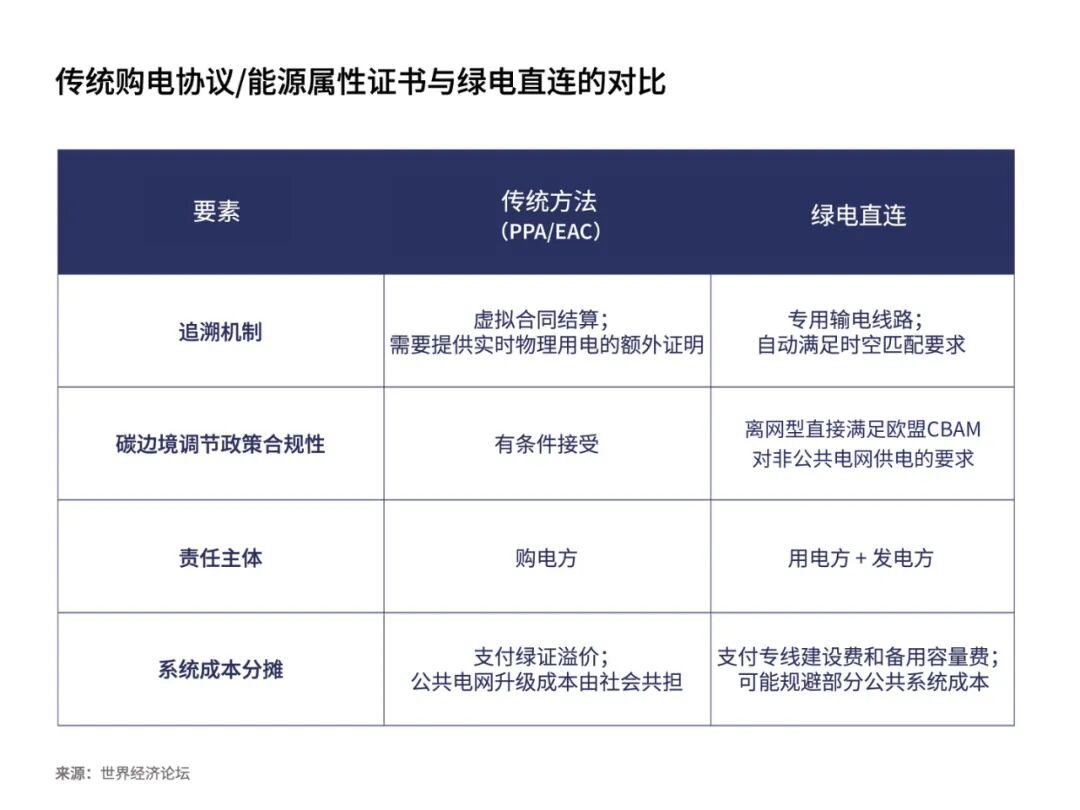
Comparison of Traditional Power Purchase Agreements/Energy Attribute Certificates vs. Direct Green Energy Supply
Image source: World Economic Forum
Globally, green electricity direct procurement is becoming increasingly common, enabling a broader range of market stakeholders to get involved—and empowering businesses to tackle emerging regulatory challenges, ensuring compliance while gaining a competitive edge.
Today, the growing demand for green energy is driving changes in the energy supply chain, with green investments increasingly focused on industrial clusters where decarbonization benefits are easier to achieve and verify.
Pioneers have already begun relocating or building new facilities in regions rich in renewable energy resources, creating clusters of zero-carbon industrial parks—and even piloting zero-carbon cities—thus fully leveraging the benefits of direct green-energy connections.
The power grid is also continuously evolving, requiring multi-dimensional, system-level innovation and further technological investments to drive the sustainable development of direct green-energy connection projects.
Emerging business models are creating new market opportunities, such as green power aggregators, virtual power plants, green financial asset management services, and digital platforms for tracking and certification in this space.
The aforementioned practices help reduce carbon emissions as well as the costs associated with carbon pricing mechanisms. By enabling transparent verification of the structure and origin of energy sources, companies not only gain greater control over their energy consumption patterns but also contribute to minimizing electricity losses during transmission.
Therefore, the competitive advantage is shifting from "cutting costs" to "demonstrating tangible progress in decarbonization," which is transforming electricity consumers into proactive system architects.
Challenges and Collaborative Solutions
Although the advantages of direct green energy connections are clear, they still face three major challenges on a global scale. These challenges can be addressed through worldwide collaboration:
1. Technical Reliability
Stronger safeguard measures are needed to ensure project reliability. Given the volatility and unpredictability of solar and wind energy, projects often require appropriately sized adjustable resources, which can also drive up initial costs. Meanwhile, technical challenges such as voltage fluctuations remain unresolved, potentially compromising the stability of the power system's operation.
Despite having backup plans, most facilities still rely on the conventional power grid during extreme weather, exposing potential weaknesses in their ability to achieve self-sufficiency.
To ensure the project's reliability, clear rules must be established regarding the safety and responsibility framework between the green electricity direct-link project and the public grid. Shared technical standards, AI-powered supply-demand matching tools, and a variety of adjustable resources serving as backup options can all help minimize voltage fluctuations and enhance system resilience.
2. Economic Feasibility
Export-oriented companies benefit from the green premium, boosting their market participation—but building dedicated transmission lines requires extremely high investments.
Budgeting is also extremely challenging, as electricity prices remain volatile—peak rates can sometimes be several times higher than off-peak prices—while new carbon border policy rules vary significantly and lack clarity across different countries.
Additionally, the aging power grids in some countries cannot support large-scale green-energy direct-link projects, and both rebuilding and upgrading the physical infrastructure as well as digital systems will require substantial financial investment.
The solution lies in strengthening market-based traceability. A transparent electricity market, through premium mechanisms and a robust traceability system, effectively incentivizes verified carbon reduction achievements.
Market rules must also accommodate regional infrastructure differences while balancing the interests of multiple stakeholders. Green finance tools, such as preferential loan rates and carbon credit trading mechanisms, can help manage project cost risks and support a meaningful decarbonization process.
3. Addressing Fragmentation
Inconsistent standards could lead to a fragmentation of the certification system, as recently seen in the disagreement between France and Germany over their power-purchase agreements.
Meanwhile, regional protectionism could restrict cross-border energy flows.
If a unified carbon accounting or mutual recognition framework is lacking—such as the EU mechanism, which acknowledges physically linked green electricity sources but does not accept China’s green certificates—companies will face additional costs due to having to meet multiple, overlapping requirements.
One solution is to strengthen international regulatory coordination. By standardizing carbon accounting and integrating it with databases from organizations like the International Renewable Energy Agency, we can help drive broader recognition of green certificates.
Simplifying domestic approval processes and trade frameworks—such as through coordination via the World Trade Organization—can also better reflect and support developing economies' progress in decarbonization.
Bringing market participants together in a fair and impartial environment can play a crucial role in addressing these challenges. The World Economic Forum’s Climate Finance Innovation Initiative is an excellent example of how fostering trust, facilitating knowledge exchange, aligning approaches, and developing a shared, traceable framework can help bridge policy gaps.

The above content solely represents the author's personal views.This article is translated from the World Economic Forum's Agenda blog; the Chinese version is for reference purposes only.Feel free to share this in your WeChat Moments; please leave a comment at the end of the post or on our official account if you’d like to republish.
Translated by: Di Chenjing | Edited by: Wang Can
The World Economic Forum is an independent and neutral platform dedicated to bringing together diverse perspectives to discuss critical global, regional, and industry-specific issues.
Follow us on Weibo, WeChat Video Accounts, Douyin, and Xiaohongshu!
"World Economic Forum"
